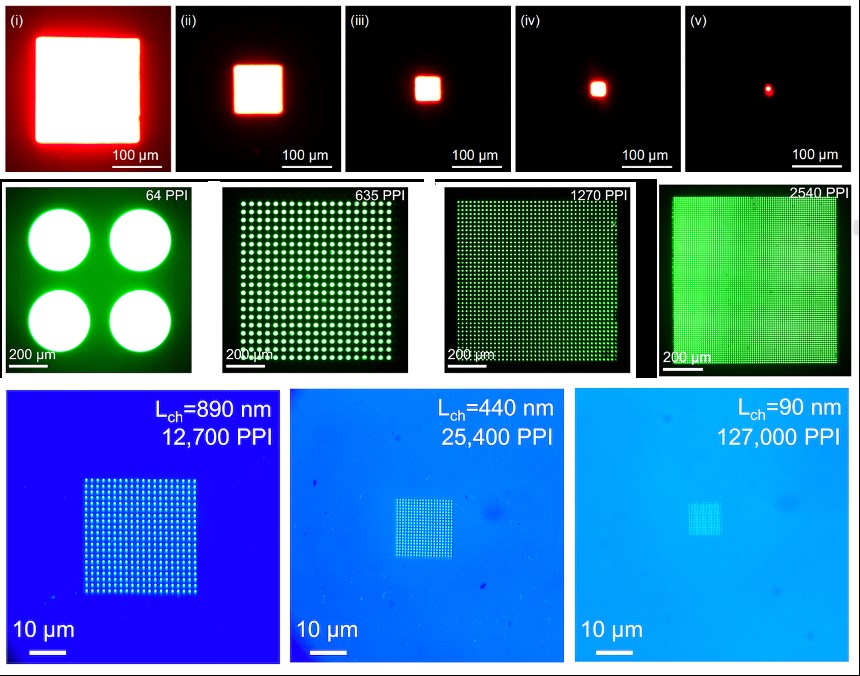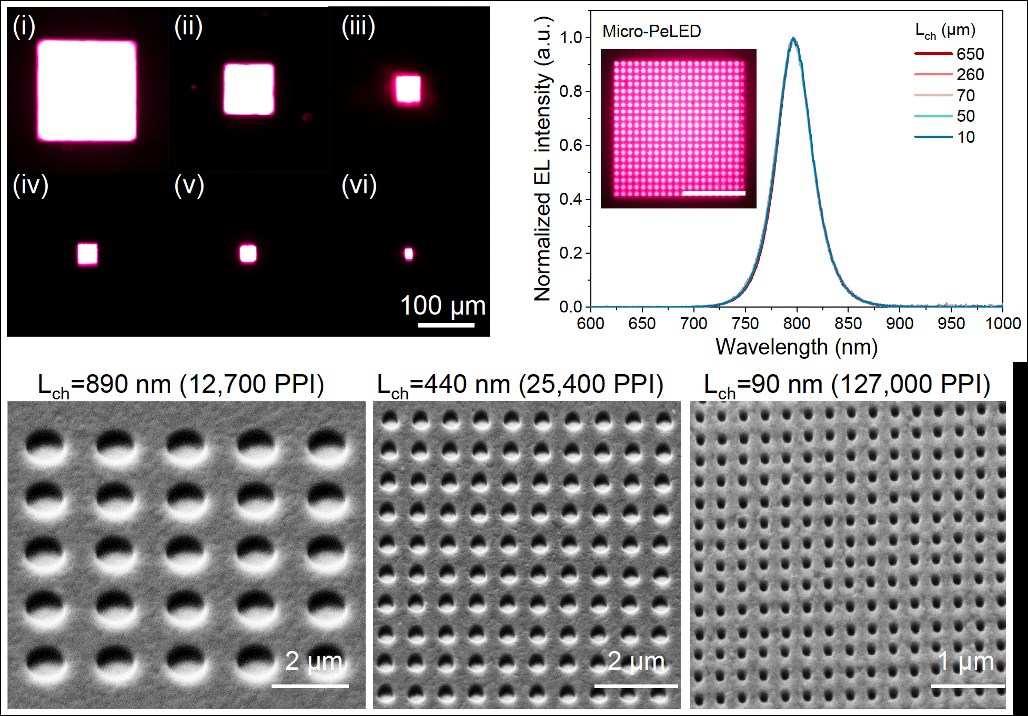 Chinese scientists have developed a new screen type with the smallest pixels and the highest pixel density. The pixel size of the screens, which can reach 127,000 ppi (pixel per inch) intensity, is only 90 nm. This is equivalent to the size of an average virus.
Chinese scientists have developed a new screen type with the smallest pixels and the highest pixel density. The pixel size of the screens, which can reach 127,000 ppi (pixel per inch) intensity, is only 90 nm. This is equivalent to the size of an average virus.The new screen technology is based on LEDs (Light emitting diode). Nowadays, the most advanced LED technology creates Mikrald screens. Mikroled screens, which cannot become widespread because it is very expensive yet, starts to lose the screen efficiency when pixels are reduced below 10 micrometers.
In the new study, scientists at the University of Zhejiang and Cambridge University managed to shrink pixels to the nanometer scale using a different semiconductor material.
Perovskit Material Used
Micrads are generally called III-V semiconductors, essentially of the periodic table III. and V. are based on alloys made of group elements. The team replaced these alloys with Perovskit materials known for their efficiency and affordable prices in the new generation solar cells. The resulting perovskit LEDs (PELEDs) have been produced in various sizes, including the smallest pixels so far.
Today, one of the screens with the highest pixel density is located in Apple Vision Pro. This micrad screen of 3,386 PPIs is 7,500 Nm in each pixel. The 127,000 ppi screen developed by researchers offers a density far beyond that.

Productivity is higher than microlads
PELEDs also offer much higher efficiency than other microlyed systems. In pixel sizes between 3.5 and 650 micrometers, productivity continuously navigates around 20 %, while most III-v micro LED has sharply decreases less than half of this rate. In the meantime, even the smallest pixels managed to achieve approximately 10 %efficiency with other LED pixels, which are 100 times their size.
This breakthrough was not only caused by the material itself; The researchers also had to develop a new way to bring structure to this material. Since this process with lasers will damage perovskite usually, the team carved a cage in more harsh materials that make up the upper and lower electrical contact points and created Perovskit pixels in these empty.
Researchers are now planning to investigate how to make small and detailed circuits enough to convert technology into useful screen systems.